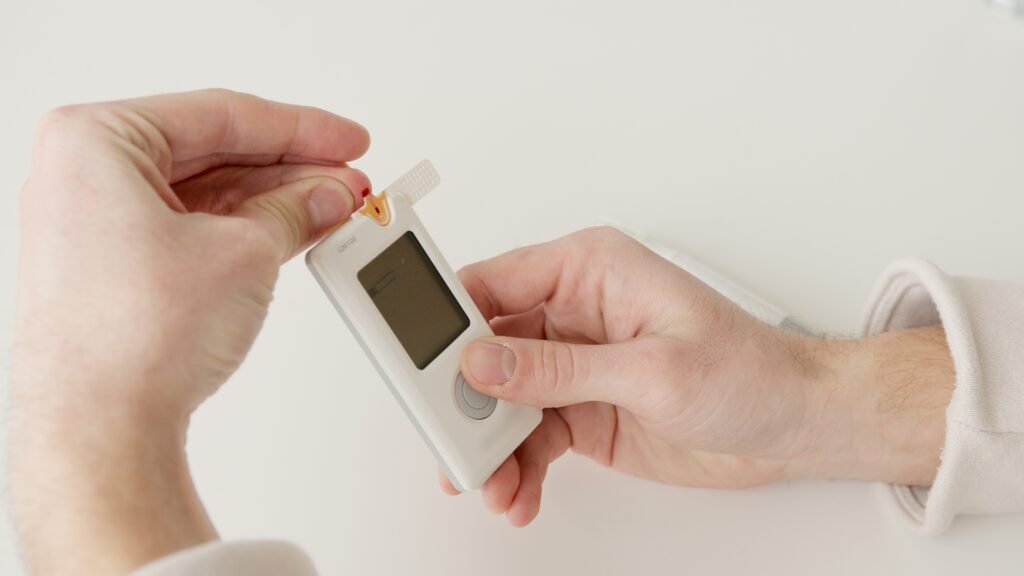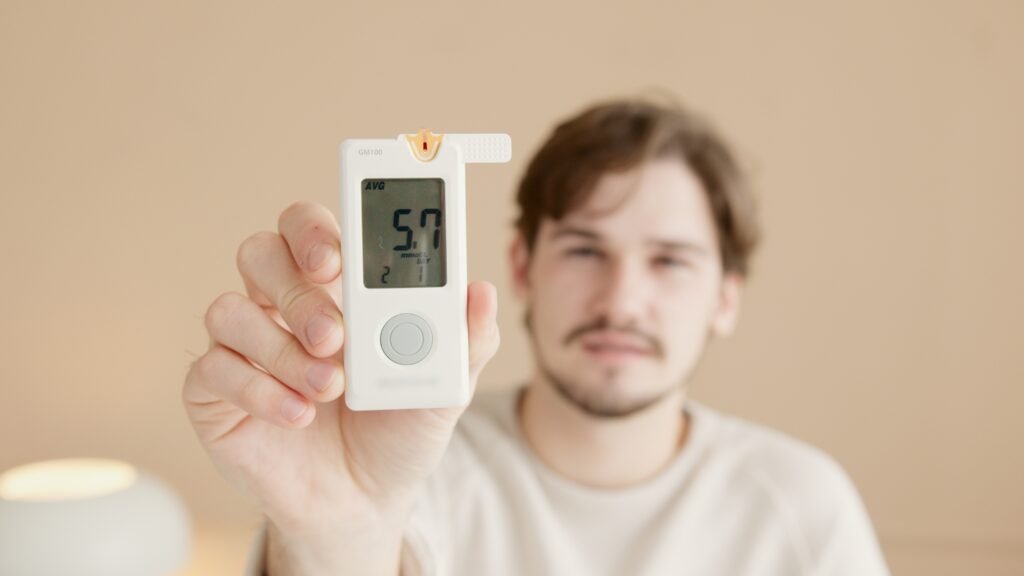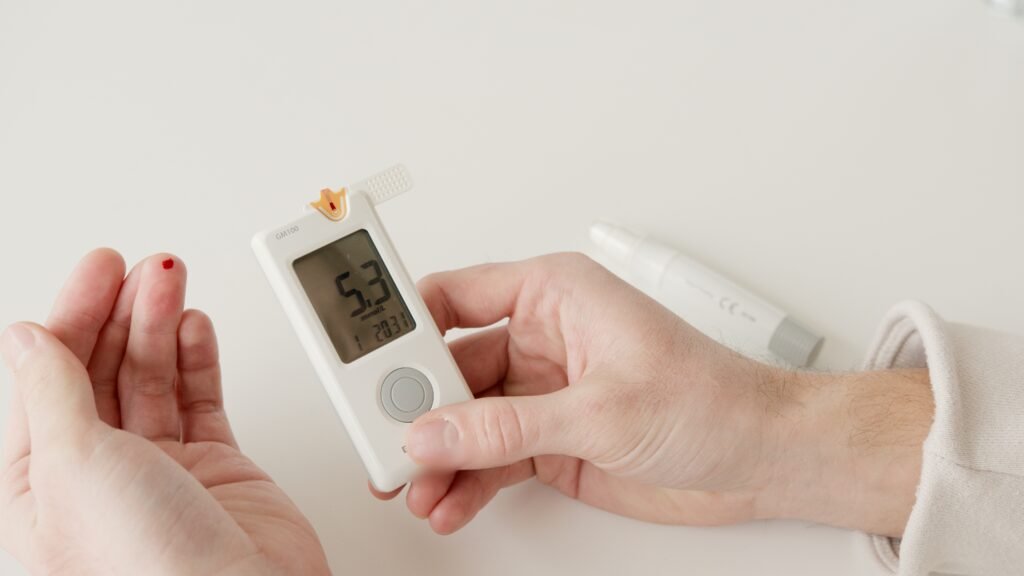How to test your blood glucose at home?
Suppose you are a diabetic person and having issues related to controlling your blood glucose levels. The best way is to test your blood sugar levels during the day using a glucose meter recommended by your doctor. It doesn’t seem very easy at first, but quickly you become used to it. These insights allow you to change your behavior and medication to improve your performance and fitness levels.
What is a Glucometer?
A glucometer or glucose meter is a device used to test blood glucose levels by placing a small drop of blood on a disposable test strip. A chemical reaction occurs between glucose and stripes, which alters the strip’s electrical conductivity. The digital screen displays the change in electrical conductivity.
How to choose the right glucometer?
Choosing the proper glucose meter is the essential step to getting accurate results. So before purchasing the glucometer, consider the ease of use, your budget, the memory capabilities of the device, and accuracy.
Ask your healthcare provider about the proper blood sugar monitor. You can also check the ratings and customer reviews of the product on the websites before finalizing your purchase.
Before buying your glucometer, thoroughly inquire about what test strips will be easily accessible and budget-friendly.
Read the instruction carefully.
Carefully read the instructions in the user manual to ensure how to use the device correctly. If you have any questions, bring your glucometer to your doctor before using the machine and ask them to show you how to use the meter.
Once you have purchased the right glucometer and know how to use it, it’s time to check your glucose levels in the comfort of your home.
Gather your supplies
- The glucose meter kit includes lancets, a lancing device, testing strips, and a meter to read the results.
- Alcohol pads to prepare your skin before testing, plus provide first aid to decrease germs in your puncture wound due to needle.
Wash plus dry your hands
Using soap and warm water, wash your hands, then rinse them thoroughly to remove soap residues. Dry afterward with a clean, dry towel.
Insert a test strip into the glucometer
A glucometer may automatically turn on, or you must insert a test strip into the meter before you prick your finger.
Note: Make sure to insert the right side of the strip into the meter to turn it on.
Wait until a “ready” indicator appears on the meter screen
The glucometer has a readout area that will alert you when it is ready. It may say to place the sample on the strip or use an icon, such as a drop of liquid, to show that you can insert your piece. If it shows a ready indicator, move towards pricking your finger.
Place a lancet in your lancing device.
Hold a lancet in your non-dominant hand and remove the lancet cap by applying a twisting force with your dominant hand. This will reveal the tiny needle on top of the lancet. Push the lancet into the lancet device until it clicks.

Clean the finger with an alcohol pad
Use rubbing alcohol on a cotton ball or use an alcohol pad to clean the tip of the finger where you are going to prick.
Prick your finger
Push the button on the top of the lancing device and place it on the side of the finger, as there are fewer nerve endings than at the tips or the pads of fingers. Press the button on the side of the lancing device to prick your finger. Squeeze or massage the finger on either side until the blood forms a small bead on your finger.
Note: The World Health Organization recommends that the middle or ring fingers be used for blood glucose tests.
It’s wise to switch fingers during the day and switch hands every day for pricking to avoid scar tissue buildup on your fingertips.

Drop your blood over the strip
Hold the bead of blood to touch the tip of the strip at the right place. The meter screen will imply when there is sufficient blood on the strip to drive the test.

Result time
Advanced glucometers take 5 seconds, while older versions can take 10 to 30 seconds. The meter may beep when the result is ready. Your results will vary depending on time and eating patterns. Discuss with your doctor when to test and what is healthy reading for you.

Dispose of your lancet and test strip
Please use a sharp container for the lancet and a biohazard container for test strips to dispose of them carefully.
Note: Be cautious about using a new lancet for every test to avoid infections and inflammation.
Keep a record of the readings.
Modern glucometers store the readings in memory. However, keeping a diary and making test record logs in a journal can help you to spot patterns and discuss your results with your healthcare team.
Discuss your test records with the doctor
Make sure to bring a log of all your readings plus a glucometer to your doctor to ensure it’s working correctly and discuss your goals with your healthcare provider.
When to test your glucose levels?
The doctor will explain to you when to test your glucose levels after reviewing your test logs.
- Fasting blood test (before meal): A test after 8 hours or more of not eating. Drinking water is ok.
- After eating test: You must check your blood sugar immediately after a meal or 2 hours after eating.
The recommended target blood sugar levels are:
- Before meals, between 80 and 130 mg/DL.
- Right after meals, less than 180 mg/DL.
- Postprandial readings are taken 2 hours after you last ate and should be under 140 mg/DL.
However, the levels vary depending on age and other health favors.

Continuous blood glucose monitor:
They automatically track blood glucose levels throughout the day and night. They do not come with test strips. These work via a small electrode placed under the skin and synchronize the results on your mobile. Doctors also recommend using a manual glucometer, even when using a continuous glucose monitor.
Precautionary measures
- Lancing devices should never use for more than one person.
- Blood glucose meters should not share. The device should be cleaned and disinfected after every use if they are shared.
- Always perform hand hygiene before and after glucose meter testing.
- Contact your doctor if your blood sugar is over 220 mg/Dl.
- Always dispose of used lancets properly to avoid other people accidentally being pricked.
To learn what tests are required to confirm diabetes and how to control your blood glucose levels, please visit the healthcare pages on howtothings.net.
Medical Disclaimer
The content of this blog post is not aimed at substituting for professional medical advice or treatment. It’s always appreciated to contact your healthcare provider before starting, shifting, or halting any health treatment.

